Original Cold War NATO Heavily Mission Marked Edinburgh England British R.A.F. Air Force Map*
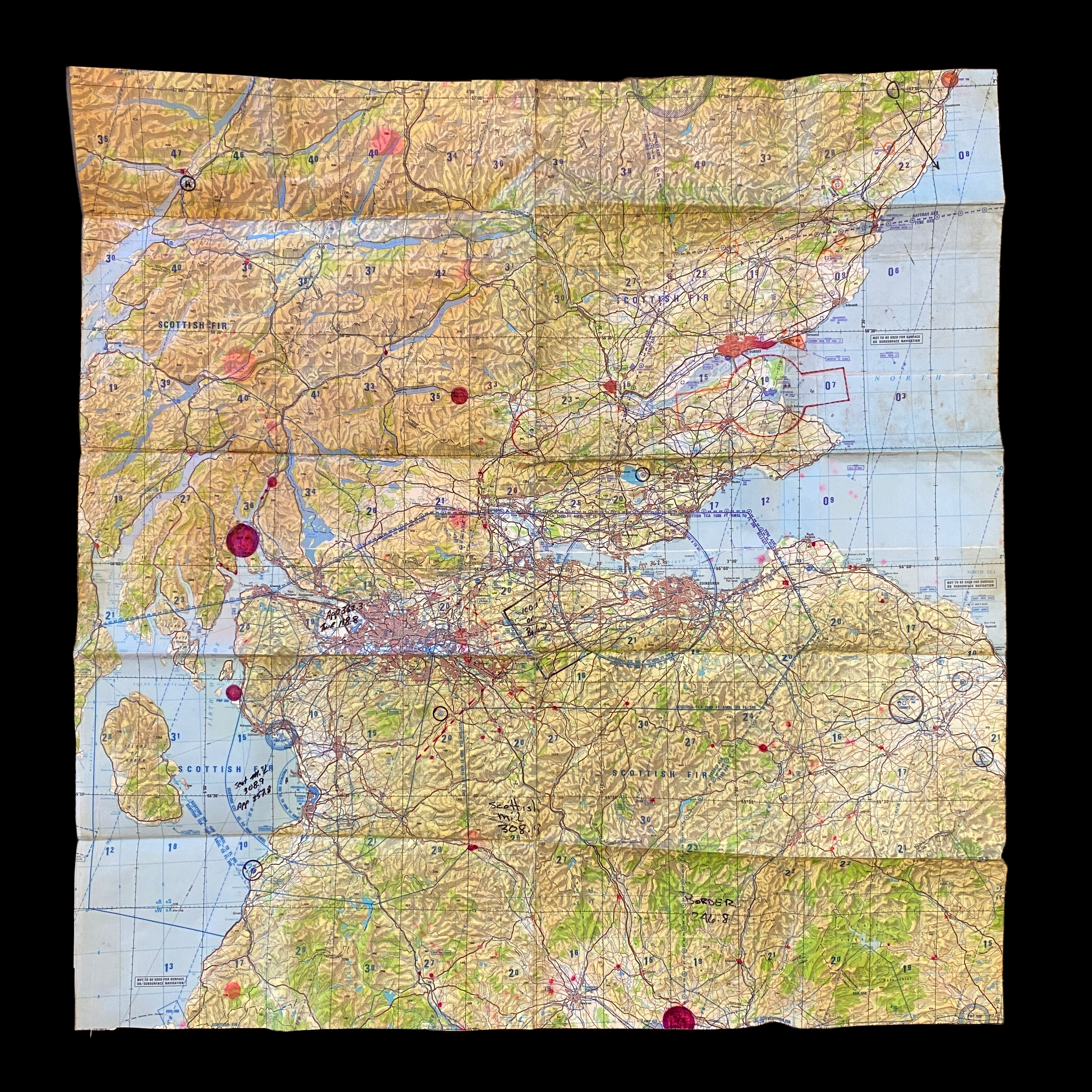
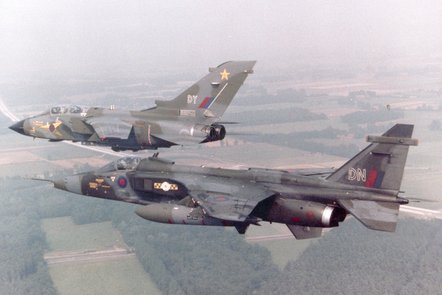

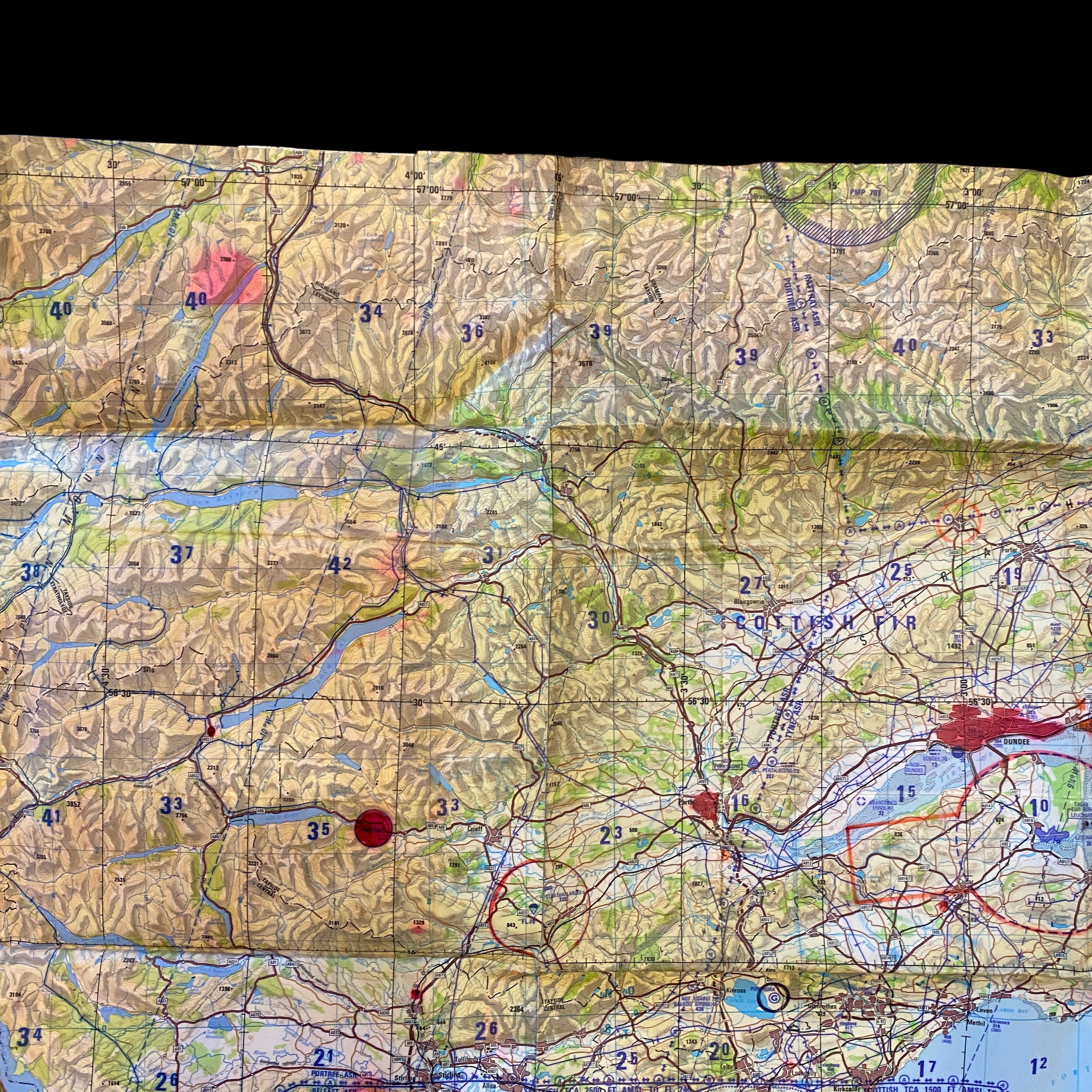
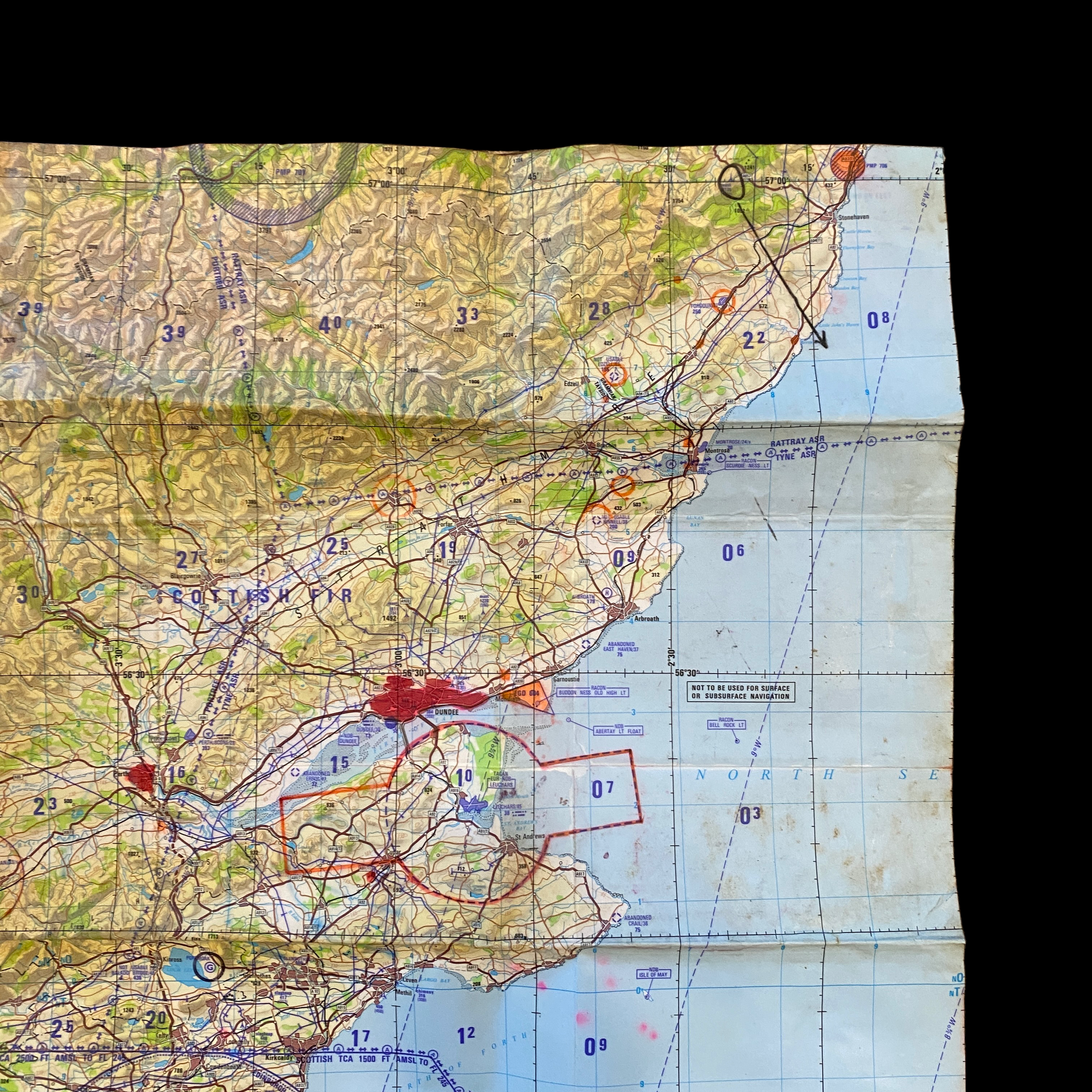
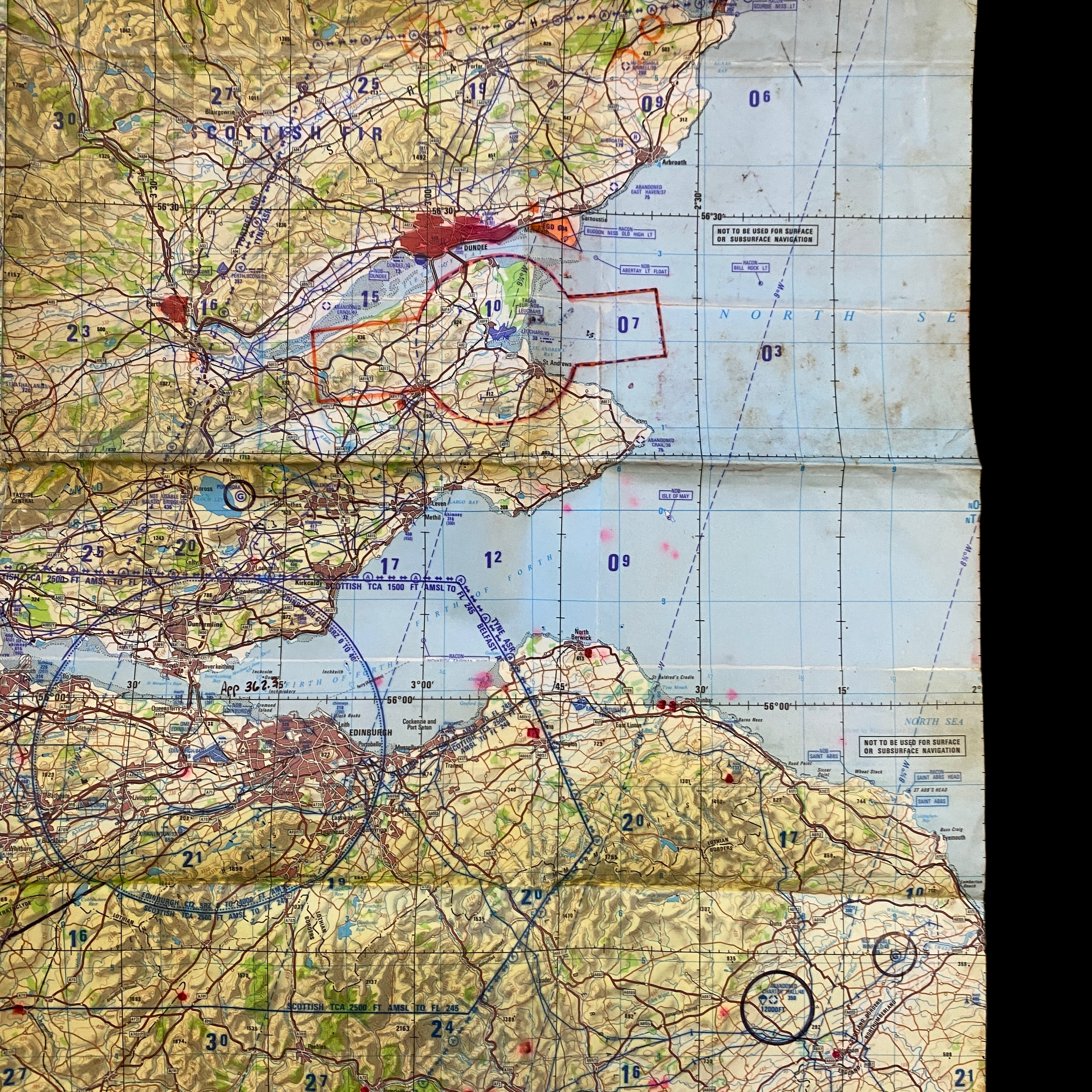
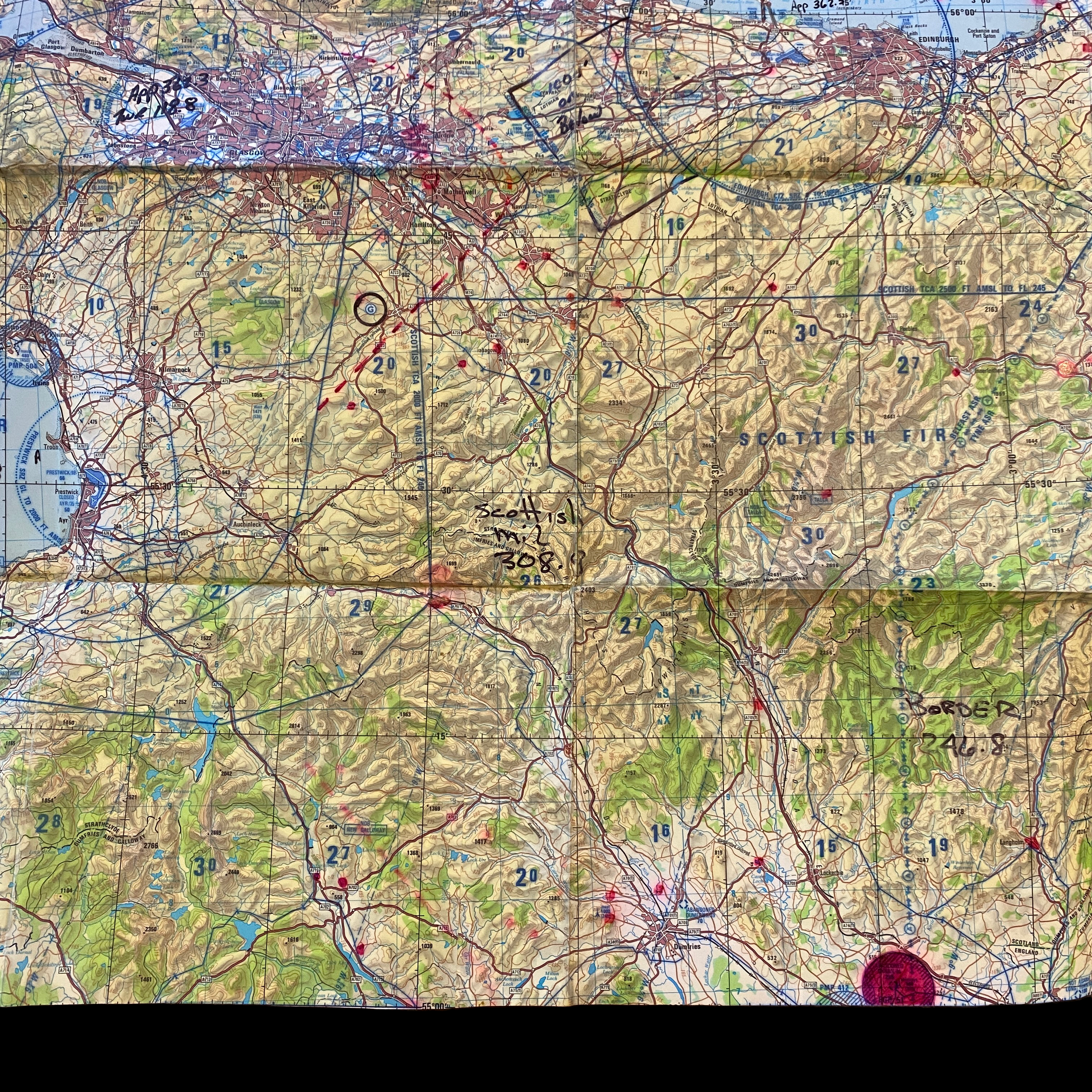
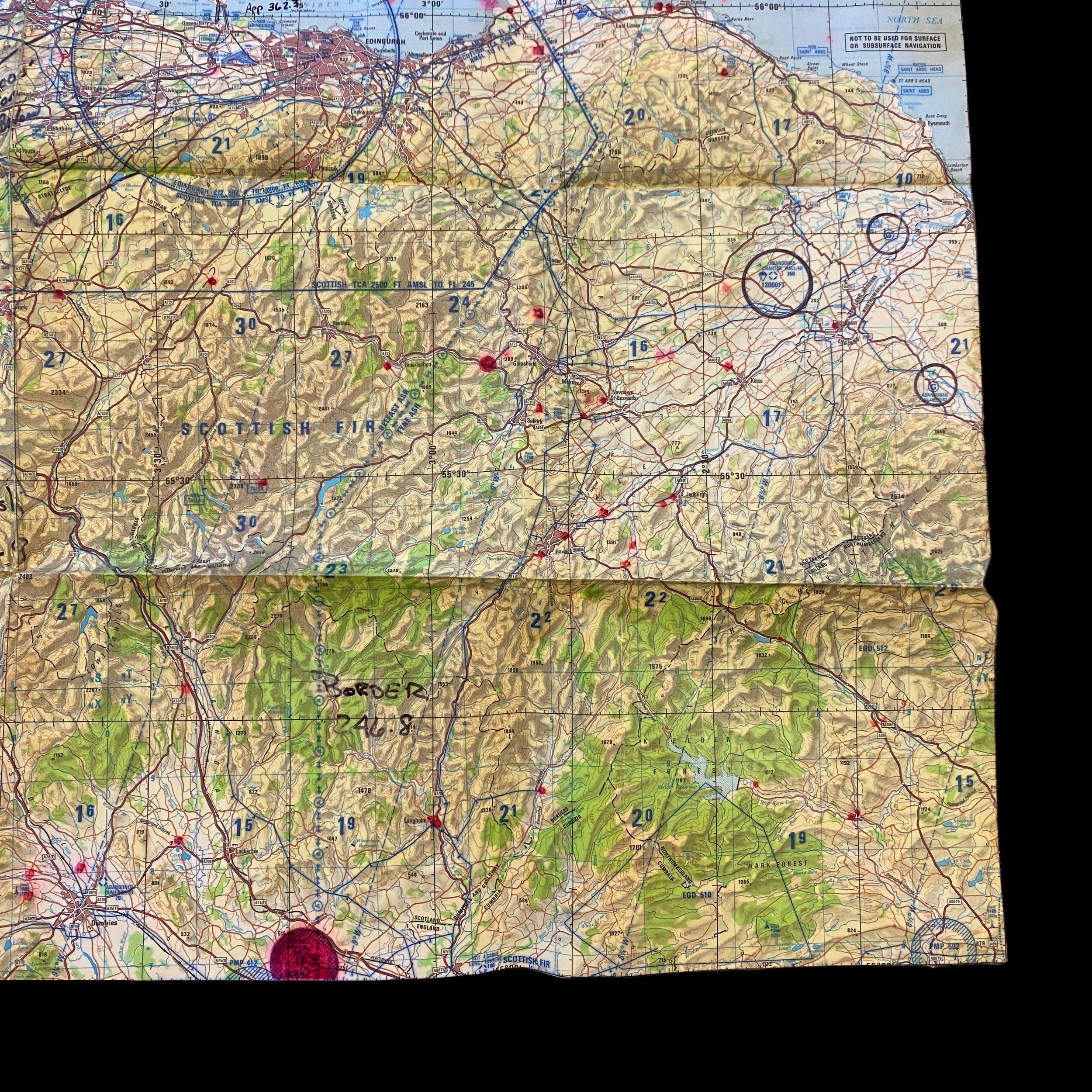

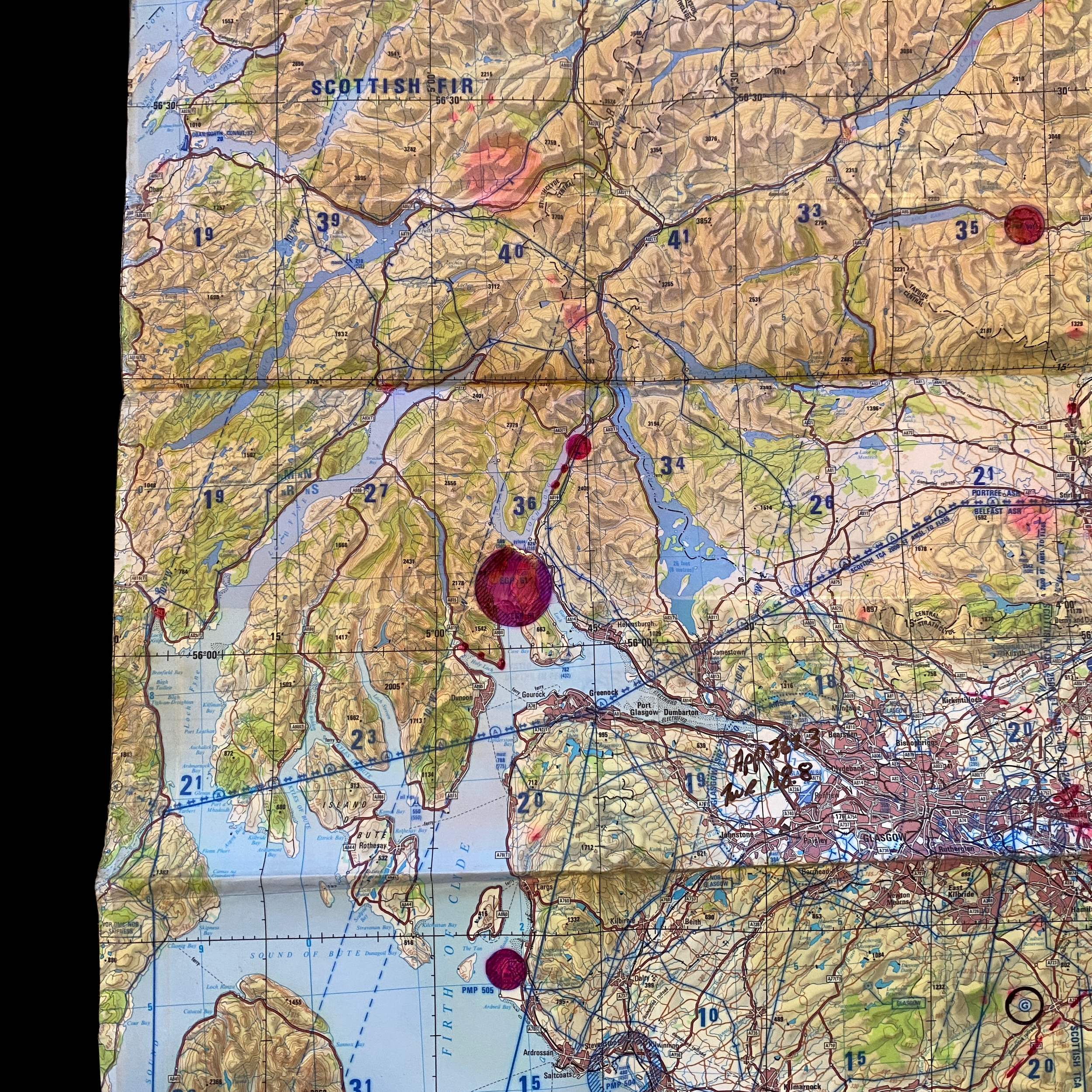
















Original Cold War NATO Heavily Mission Marked Edinburgh England British R.A.F. Air Force Map*
Comes with hand-signed C.O.A. and full historical write-up
The Royal Air Force (RAF) played a crucial role in defending the United Kingdom and NATO during the Cold War. As a member of NATO, the UK was one of the front-line states in the conflict with the Soviet Union and its allies. The RAF, along with the other branches of the UK's armed forces, was responsible for providing air defense for the country and its NATO partners.
This incredible and museum-grade artifact is a heavily marked and heavily used NATO Air Force map showing rare glimpses into NATO and R.A.F. operations in England during the Cold War. This British Royal Air Force map would have been used for air defense, air-to-ground missions, and transport and would have been of extreme importance to NATO R.A.F. pilots and navigators during NATO missions and patrols.
During the early years of the Cold War, the RAF was equipped with a mix of aircraft, including jet fighters such as the Hawker Hunter and Gloster Meteor, as well as piston-engine fighters such as the Hawker Tempest and de Havilland Vampire. These aircraft were used to intercept Soviet bombers that might attempt to penetrate UK airspace.
In the 1950s and 1960s, the RAF received new jet fighters, including the English Electric Lightning and the supersonic Hawker Siddeley Harrier. These aircraft were capable of much higher speeds and altitudes than their predecessors, and were essential for keeping pace with the Soviet Union's growing air power.
In addition to intercepting enemy aircraft, the RAF also played a vital role in NATO's strategic nuclear deterrent. The UK's V-bombers, the Avro Vulcan, Handley Page Victor, and the Vickers Valiant, were equipped with nuclear missiles and were a key part of NATO's strategy for deterring a Soviet attack.
As the Cold War entered its later stages, the RAF continued to modernize and upgrade its aircraft. In the 1980s, the RAF introduced the Panavia Tornado, a multirole fighter that was used for air-to-air combat as well as ground attack missions.
Throughout the Cold War, the RAF maintained a constant state of readiness, with fighter squadrons on constant alert and air bases scattered around the country. The RAF's efforts, along with those of the other branches of the UK's armed forces, helped to deter a Soviet attack on the UK and its NATO allies and contributed to the eventual collapse of the Soviet Union.
Cold War:
The Cold War was a period of political and military tension between the Western powers, led by the United States, and the Eastern powers, led by the Soviet Union, that lasted from the late 1940s to the early 1990s. During this time, Germany was divided into two countries: the Federal Republic of Germany (also known as West Germany) and the German Democratic Republic (also known as East Germany).
West Germany was a key member of NATO, the Western military alliance that was formed to counter the threat of the Soviet Union and the Warsaw Pact. The United States and the United Kingdom, both members of NATO, maintained a significant presence in West Germany during the Cold War, including a number of air bases. The US Air Force had bases such as Ramstein Air Base, Spangdahlem Air Base, and Rhein-Main Air Base, which were used for air defense, air-to-ground missions, and transport. The British Royal Air Force also had bases in West Germany, including RAF Gatow in Berlin and RAF Laarbruch in the western part of the country.
The air forces in West Germany played a vital role in deterring aggression from the Soviet Union and its allies, and they were also involved in a number of other operations during the Cold War. One of the most significant was the Berlin Airlift in 1948, in which the US and British air forces provided humanitarian aid to the citizens of West Berlin, who were being blockaded by the Soviet Union. The airlift was a successful demonstration of the Western powers' commitment to defending West Berlin, and it helped to prevent a potential military conflict between the East and the West.
In contrast to West Germany, East Germany was a member of the Warsaw Pact and a communist country. The East German government implemented a number of economic and social policies that were meant to improve living conditions, but many people were frustrated with the lack of freedoms and the continued presence of Soviet troops. The Berlin Wall, which separated West Berlin from East Berlin and the rest of East Germany, was erected in 1961 and remained in place until 1989. The wall was a symbol of the division between the Western world and the Eastern bloc during the Cold War.
The Cold War came to an end in the early 1990s, and in 1990, the two Germanies were reunited. The fall of the Berlin Wall and the collapse of the Soviet Union marked the end of the Cold War, and Germany has since become a unified and prosperous country, playing a key role in the European Union.
Overall, the Cold War had a significant impact on Germany, and the country's division into two rival states had far-reaching consequences for both its people and its international relations. The presence of the US and British air forces in West Germany was an important factor in deterring aggression from the East and helping to maintain peace during a volatile time in world history.